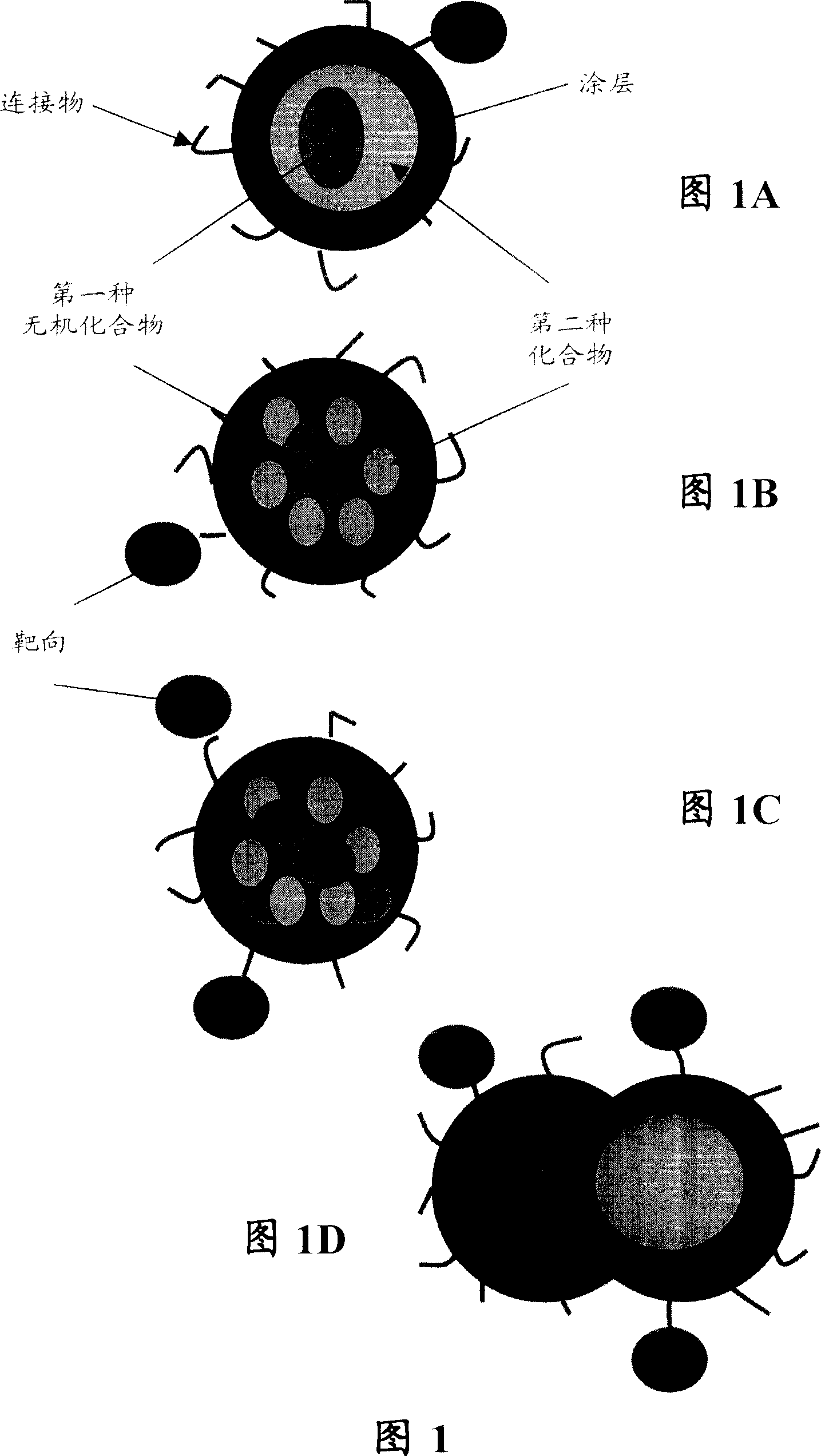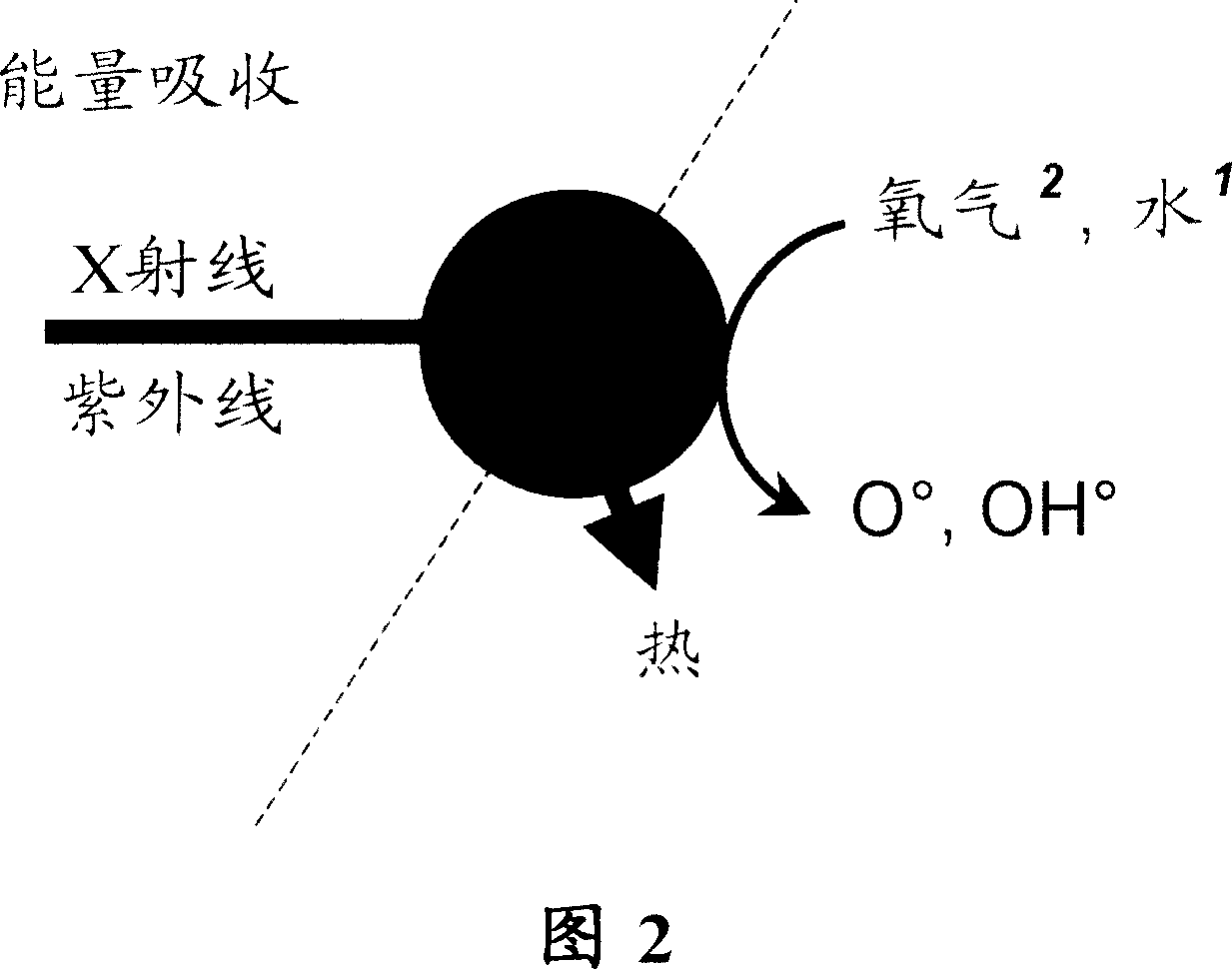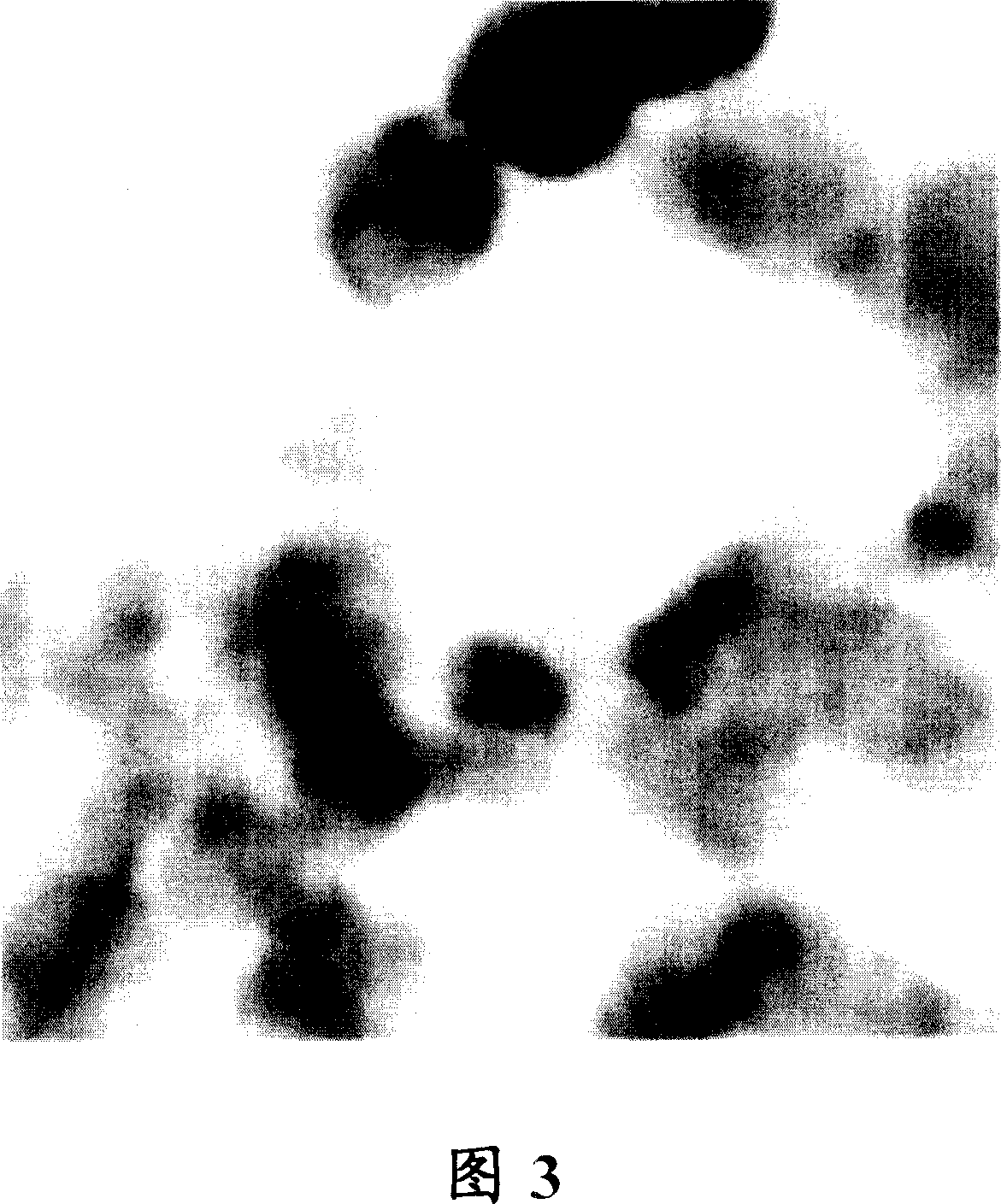Activatable particles, preparations and uses.
A particle and nanoparticle technology, used in biochemical equipment and methods, radiation sensitizing materials, preparation of X-ray contrast agents, etc., can solve the problems of patients with photosensitivity and limited frequency
- Summary
- Abstract
- Description
- Claims
- Application Information
AI Technical Summary
Problems solved by technology
Method used
Image
Examples
Embodiment Construction
[0114]1. Y doped with Erbium or Gadolinium 2 o 3 Preparation of nanoparticles
[0115] Y doped with erbium or gadolinium 2 o 3 Nanoparticles are synthesized from functionalized surfactants (Y-AOT 3 , Eu-AOT 3 , and Gd-AOT 3 ). Mix the appropriate surfactant mixture (based on the desired final concentration [Eu-AOT 3 ] / [Y-AOT 3 ]=0.01; 0.05; 0.1; 0.15) dispersed in isooctane or cyclohexane. Water was added to promote micelle formation. The size of the micelles, which affects the size of the material obtained, is controlled by the amount of water added to the mixture. Hydroxide is formed by adding base. The particles were then rinsed with a water / ethanol mixture, dried and heated at 800°C in order to form crystalline nanoparticles.
[0116] 10 mg of nanoparticles were dispersed in 50 ml of water at pH 7.5. A drop of this dispersion was deposited onto a copper / carbon grid and observed under a transmission electron microscope. Micrographs are shown in FIG. 3 .
[01...
PUM
| Property | Measurement | Unit |
|---|---|---|
| size | aaaaa | aaaaa |
| thickness | aaaaa | aaaaa |
| size | aaaaa | aaaaa |
Abstract
Description
Claims
Application Information
 Login to View More
Login to View More - R&D
- Intellectual Property
- Life Sciences
- Materials
- Tech Scout
- Unparalleled Data Quality
- Higher Quality Content
- 60% Fewer Hallucinations
Browse by: Latest US Patents, China's latest patents, Technical Efficacy Thesaurus, Application Domain, Technology Topic, Popular Technical Reports.
© 2025 PatSnap. All rights reserved.Legal|Privacy policy|Modern Slavery Act Transparency Statement|Sitemap|About US| Contact US: help@patsnap.com



